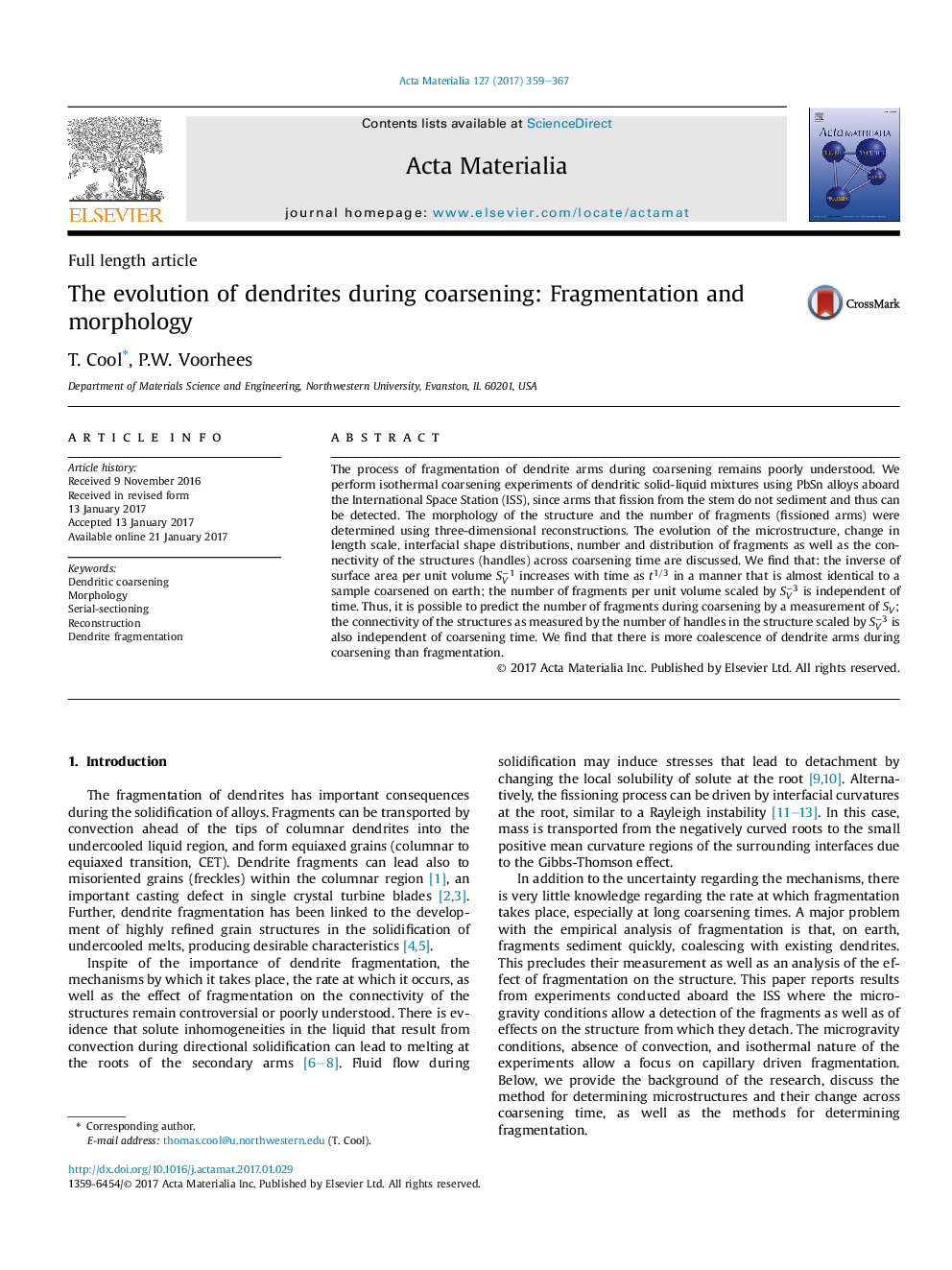| Article ID | Journal | Published Year | Pages | File Type |
|---|---|---|---|---|
| 5436339 | Acta Materialia | 2017 | 9 Pages |
The process of fragmentation of dendrite arms during coarsening remains poorly understood. We perform isothermal coarsening experiments of dendritic solid-liquid mixtures using PbSn alloys aboard the International Space Station (ISS), since arms that fission from the stem do not sediment and thus can be detected. The morphology of the structure and the number of fragments (fissioned arms) were determined using three-dimensional reconstructions. The evolution of the microstructure, change in length scale, interfacial shape distributions, number and distribution of fragments as well as the connectivity of the structures (handles) across coarsening time are discussed. We find that: the inverse of surface area per unit volume SVâ1 increases with time as t1/3 in a manner that is almost identical to a sample coarsened on earth; the number of fragments per unit volume scaled by SVâ3 is independent of time. Thus, it is possible to predict the number of fragments during coarsening by a measurement of SV; the connectivity of the structures as measured by the number of handles in the structure scaled by SVâ3 is also independent of coarsening time. We find that there is more coalescence of dendrite arms during coarsening than fragmentation.
Graphical abstractDownload high-res image (110KB)Download full-size image
